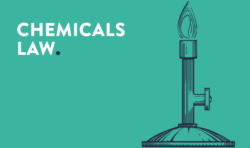In 2017, the European Commission (hereinafter: Commission) requested the European Chemicals Agency (hereinafter: ECHA) to prepare a restriction proposal for “microplastics” based on Regulation (EU) No. 1907/2006 (hereinafter: REACH), which has been available since the beginning of 2019 (available at Annex XV restriction report – Proposal for a restriction – intentionally added microplastics)
The proposed restriction can be read in full as follows:
“Polymers within the meaning of Article 3(5) REACH shall not be placed on the market a substance on its own or in a mixture as a microplastic in a concentration equal to or greater than 0.01% by weight from the date on which the restriction enters into force.“
The term “microplastic” is defined in the ECHA proposal as
“a material consisting of solid polymer containing particles, to which additives or other substances may have been added, and where ≥ 1% w/w of particles have (i) all dimensions 1nm ≤ x ≤ 5mm, or (ii), for fibres, a length of 3nm ≤ x ≤ 15mm and length to diameter ratio of >3.“
According to ECHA’s proposal, there will be exemptions from the restriction (e.g. for medicinal products) and transitional periods (e.g. for cosmetic products, medical devices and in vitro diagnostics) of up to six years.
After sometimes very controversial debates on ECHA’s restriction proposal, the responsible committees – the Committee for Risk Assessment (hereinafter RAC) and the Committee for Socio-economic Analysis (hereinafter SEAC) – have now adopted their opinions on the proposal, taking into account the input submitted during the public participation on ECHA’s proposal.
Both Committees in general back ECHA’s proposal. However, the RAC calls for stricter criteria to prove the biodegradability of a polymer, as such polymers are not considered microplastics according to paragraph 3 lit. b) of the restriction proposal and are therefore excluded from the scope of the restriction. Furthermore, the RAC suggests to include a transitional period of six years for synthetic infill materials in artificial turf pitches, but after this transitional period, the infill materials should be completely banned and the continued use of such synthetic infill materials with appropriate risk management measures should not be permitted. Finally, the RAC calls for a readjustment of the term “microplastics” with regard to the lower limit of the particle size covered, which according to the RAC should be completely dropped.
Following the publication of the draft opinion of the SEAC, there will be a further public participation on this draft. Submissions under this renewed and final public participation may be made for a period of 60 days from the start of the same, which is usually a few days after the publication of the draft SEAC opinion. According to the current information available, this means that this second public participation will probably start shortly and end in the course of August or September this year.
In summary, ECHA’s restriction proposal on intentionally added microplastics has thus overcome two important hurdles and will probably enter into force in the first half of next year 2021, if things proceed normally. This is despite considerable reservations about the legality of the planned restriction, as we believe that the proposal in its current version has no basis in the REACH Regulation and is therefore in breach of it. One reason for this is that the object of the restriction is not sufficiently substance-related and sufficiently defined. On the other hand, there has also been no adequate substance-related hazard and risk assessment regarding the object of restriction.
Further information is available at: ECHA – RAC backs restricting intentional use of microplastics and ECHA – Hot topics – Microplastics
Do you have any questions about this news or would you like to discuss the news with the author? You are welcome to contact: Michael Öttinger






